Welcome to the future of content creation! In an era where technology innovation is rapidly shaping various industries, OpenAI has emerged as a frontrunner in revolutionizing AI vlogging. But how exactly is OpenAI transforming the way we create and consume video content? Let’s delve into the world of machine learning and neural networks to explore the groundbreaking achievements of OpenAI in AI vlogging.
Through its advanced machine learning algorithms, OpenAI has unlocked new possibilities for content creators, allowing them to push the boundaries of their creativity. Gone are the days of solely relying on traditional video editing techniques and laborious post-production processes. OpenAI’s neural networks have paved the way for automated video generation and streamlined content creation.
But how does OpenAI’s technology work, and what are the implications for the future of AI vlogging? In this article, we will dive deep into the mechanics behind OpenAI’s video generation capabilities. We will also explore the emergence of Sora, OpenAI’s text-to-video model, and its potential to revolutionize the way videos are created.
Join us on this exciting journey as we uncover the transformative power of OpenAI in revolutionizing AI vlogging and shaping the future of content creation.
Key Takeaways:
- OpenAI is revolutionizing AI vlogging through its innovative machine learning and neural network technologies.
- OpenAI’s advancements in automating video generation have transformed the content creation process.
- The emergence of Sora, OpenAI’s text-to-video model, has opened up new possibilities for creative video storytelling.
- Understanding the mechanics behind OpenAI’s video generation can provide insights into the complexity and sophistication of the technology.
- OpenAI’s contributions to AI vlogging have paved the way for exciting advancements in content creation and storytelling.
The Emergence of Sora: OpenAI’s Text-to-Video Model
OpenAI continues to push the boundaries of AI content creation with the introduction of Sora, its cutting-edge text-to-video model. Leveraging the power of machine learning and advanced neural networks, Sora has introduced a new era in video generation and revolutionized the way videos are created and shared.
Capabilities and Features of Sora
Sora is capable of generating highly detailed and realistic videos based on textual input. By simply providing a written description, users can witness their ideas come to life in a visually engaging and compelling format. The model’s advanced algorithms enable it to understand the context, scene composition, and visual aesthetics, resulting in videos that closely resemble human-created content.
One of the remarkable features of Sora is its ability to generate diverse video styles and genres. Whether it’s an animated explainer video, a cinematic short film, or a tutorial demonstration, Sora can adapt to various visual storytelling formats. This versatility empowers creators with limitless possibilities, allowing them to explore different video concepts and engage their audiences in unique ways.
Implications for Content Creation and Vlogging
Sora has significant implications for content creation and vlogging, opening up new avenues for creativity and expression. Content creators can now leverage the power of Sora to produce high-quality videos with minimal effort and resources. This breakthrough in AI technology eliminates the need for complex video editing tools and extensive video production techniques, making it accessible to creators of all skill levels.
The seamless integration of Sora into the content creation process expedites video production and frees up valuable time for creators to focus on storytelling and ideation. With Sora’s ability to generate videos at scale, content creators can now deliver consistent and engaging content to their audiences, enhancing viewer satisfaction and loyalty.
As AI content creation tools like Sora become more prevalent, they are reshaping the landscape of vlogging. Creators can now explore innovative narrative techniques, experiment with immersive experiences, and create visually stunning videos that captivate their viewers. The fusion of AI technology and vlogging offers limitless possibilities for storytelling, empowering creators to push the boundaries of their creativity and captivate audiences like never before.
Comparing AI Giants: OpenAI and Google DeepMind’s Innovations
In the field of artificial intelligence, OpenAI and Google DeepMind have emerged as key players, driving innovation and pushing boundaries in AI research and technology. Both companies have made significant advancements in machine learning and other areas, shaping the future of the industry.
OpenAI, founded in 2015, has been at the forefront of AI research and development. With its focus on creating safe and beneficial AI systems, OpenAI has contributed to the advancement of technology and the exploration of new possibilities.
Google DeepMind, acquired by Google in 2014, has also been a driving force in AI research. Known for its groundbreaking work in deep reinforcement learning and AI capabilities, DeepMind continues to push the boundaries of what AI can achieve.
When comparing OpenAI and Google DeepMind, it is important to highlight their respective innovations and contributions to the field. OpenAI’s notable projects include the development of the GPT (Generative Pre-trained Transformer) models, which have revolutionized natural language processing and text generation. On the other hand, DeepMind’s breakthroughs include the creation of AlphaGo, the AI program that defeated the world champion Go player, and AlphaFold, the AI system that predicts protein folding, a crucial task in biology.
Machine learning is a common thread that runs through the accomplishments of both OpenAI and Google DeepMind. By leveraging machine learning algorithms and robust data sets, these companies have been able to train AI models that can perform complex tasks, learn from experience, and make decisions in real-world scenarios.
As AI research and technology innovations continue to evolve, OpenAI and Google DeepMind are at the forefront, driving progress and shaping the future of artificial intelligence. Their contributions have far-reaching implications, as they pave the way for new applications, discoveries, and advancements in various industries.
Comparative Table: OpenAI and Google DeepMind’s Innovations
| OpenAI | Google DeepMind |
|---|---|
| Developed GPT models for natural language processing and text generation. | Created AlphaGo, the AI program that defeated the world champion Go player. |
| Contributed to advances in AI safety and responsible development. | Pioneered the use of deep reinforcement learning in AI systems. |
| Explored applications of AI in robotics, climate change, and healthcare. | Developed AlphaFold, an AI system for predicting protein folding. |
| Focused on democratizing access to AI technologies through open research and collaboration. | Continues to push the boundaries of AI capabilities and applications. |
Understanding the Mechanics Behind OpenAI’s Video Generation
In this section, we delve into the mechanics behind OpenAI’s video generation technology. OpenAI’s video generation is made possible through the innovative use of AI technology, particularly neural networks and machine learning algorithms.
“OpenAI’s video generation technology represents a significant breakthrough in the field of artificial intelligence. By harnessing the power of neural networks and machine learning, OpenAI has developed a system capable of producing high-quality videos.”
Neural networks are a key component of OpenAI’s video generation process. These complex systems are designed to mimic the workings of the human brain, enabling computers to learn and make decisions based on patterns and data. Through the training of neural networks, OpenAI’s video generation technology is able to analyze and understand visual information, allowing it to generate realistic and visually appealing videos.
Machine learning algorithms also play a crucial role in OpenAI’s video generation. These algorithms enable the system to learn from large datasets, continually improving its ability to generate high-quality videos. The more data the system is exposed to, the better it becomes at understanding and replicating visual elements such as motion, lighting, and texture.
By leveraging the power of neural networks and machine learning, OpenAI has created a video generation technology that pushes the boundaries of what is possible in visual content creation. The result is a system capable of producing videos that are not only realistic but also artistically impressive.
As OpenAI continues to refine and enhance its video generation capabilities, we can expect even more groundbreaking advancements in AI technology. The potential applications of OpenAI’s video generation extend beyond vlogging and content creation, with possibilities in film production, virtual reality experiences, and much more.
As we gain a deeper understanding of the mechanics behind OpenAI’s video generation technology, we can truly appreciate the incredible potential and impact it has on the future of visual storytelling.
Assessing the Photorealism of AI-Generated Videos
In the world of AI-generated videos, photorealism plays a crucial role in creating visually stunning and immersive content. Advancements in computer vision have propelled the development of AI algorithms capable of producing highly realistic videos that often blur the line between reality and virtuality.
Computer vision, a branch of AI technology, focuses on training algorithms to interpret and understand visual data. These algorithms enable machines to recognize patterns, objects, and features in images and videos, mimicking the human visual perception process. With the aid of deep learning and neural networks, computer vision algorithms have made remarkable progress in generating AI-generated videos with photorealistic qualities.
One of the challenges in creating photorealistic AI-generated videos is the detection and prevention of Deepfakes. Deepfakes refer to manipulated videos or images that appear genuine but are actually generated using AI algorithms that replace the original content with fabricated elements. The rapid advancement of Deepfake technology necessitates the development of robust Deepfake detection algorithms to ensure the authenticity and credibility of AI-generated content.
Image: Photorealism of AI-Generated Videos
By investing in the research and development of Deepfake detection techniques, experts are working towards improving the reliability of AI-generated videos and preventing the spread of misleading or false content. These efforts involve training algorithms to identify subtle visual cues and anomalies that may indicate the presence of Deepfakes.
The evolution of computer vision and AI-generated videos presents exciting possibilities for various industries, including entertainment, advertising, and education. The ability to create realistic virtual environments and characters opens up new avenues for storytelling, marketing, and immersive experiences.
In conclusion, the photorealism of AI-generated videos is a product of advancements in computer vision and the application of deep learning algorithms. As technology continues to evolve, the industry must stay vigilant in developing effective Deepfake detection methods to ensure the authenticity and integrity of AI-generated content.
Artificial Intelligence: Disrupting Visual Storytelling
In this section, we explore the transformative impact of artificial intelligence (AI) on visual storytelling. AI technologies are revolutionizing content creation and narrative techniques, enabling creators to deliver more immersive and engaging experiences to their audiences.
With AI-powered tools and algorithms, content creators can now unlock new storytelling possibilities. AI can analyze vast amounts of data, enabling creators to identify patterns and trends that inform their storytelling choices. By harnessing machine learning and deep learning techniques, AI can understand human emotions, preferences, and behaviors, allowing for more personalized and targeted narratives.
One of the key advantages of AI in visual storytelling is its ability to automate labor-intensive tasks. This includes video editing, special effects, and even scriptwriting. AI algorithms can generate and suggest visual and audio elements that enhance the storytelling process, saving creators valuable time and effort.
Furthermore, AI technologies enable creators to tap into immersive experiences. By leveraging virtual reality (VR) and augmented reality (AR), AI-generated content can transport audiences into dynamic and interactive story worlds. This creates a more captivating and memorable experience, fostering a deeper connection between the audience and the narrative.
“AI-powered tools and algorithms enable creators to unlock new storytelling possibilities and automate labor-intensive tasks, enhancing the overall storytelling process.”
The future implications of AI on visual storytelling are vast and exciting. As AI continues to advance, we can expect more sophisticated content creation tools and techniques. Real-time AI-generated storytelling experiences and interactive narratives will become increasingly common, blurring the boundaries between the creator and the audience.
However, it’s essential to recognize and navigate the ethical considerations that come with AI-driven visual storytelling. Issues such as data privacy, algorithmic bias, and the manipulation of information require careful reflection and responsible use of AI technologies.
By embracing AI technologies and leveraging their potential, creators have the opportunity to push the boundaries of visual storytelling and captivate audiences in ways never before possible. Visual storytelling powered by AI is transforming the content creation landscape, allowing for more immersive and interactive experiences that will shape the future of storytelling.
OpenAI’s Ethical Approach to AI Video Tool Dissemination
In the realm of AI development, OpenAI stands out not only for its groundbreaking innovations but also for its commitment to ethical practices. As OpenAI continues to revolutionize AI-generated content, including AI video tools, it prioritizes the responsible dissemination and use of these technologies. Red teaming, a key aspect of OpenAI’s ethical approach, plays a crucial role in ensuring the safety and accountability of AI video tools.
Red Teaming and the Safety of AI Technologies
Red teaming involves a critical evaluation process where independent experts simulate adversarial scenarios to uncover vulnerabilities within AI systems. In the context of AI video tools, red teaming helps OpenAI identify potential risks and weaknesses in the technology, ensuring that it is robust, safe, and resistant to misuse. By subjecting their AI video tools to rigorous scrutiny, OpenAI takes proactive measures to address any ethical concerns and protect against unintended consequences.
To maintain the highest standards of safety, OpenAI actively engages with external researchers, stakeholders, and the broader AI community to gather diverse perspectives. This collaborative approach helps fortify the development and deployment of AI video tools, ultimately fostering trust and confidence in their use.
Implementing President Biden’s AI Executive Order
OpenAI also aligns its practices with the principles outlined in President Biden’s AI executive order. This executive order emphasizes the importance of ethical AI development, deployment, and use across sectors. OpenAI embraces these principles and actively implements guidelines to promote transparency, accountability, and fairness in AI video tool dissemination.
By adhering to President Biden’s executive order and actively embracing ethical AI practices, OpenAI positions itself as a leader in responsible AI development and deployment. Its commitment to safety and ethical considerations ensures that AI video tools have a positive impact and contribute to the betterment of society.
Red teaming and OpenAI’s dedication to implementing President Biden’s AI executive order serve as strong pillars of the company’s ethical approach to AI video tool dissemination. By prioritizing safety, accountability, and responsible use, OpenAI is driving the development of AI technologies that enrich the content creation landscape while upholding the highest ethical standards.
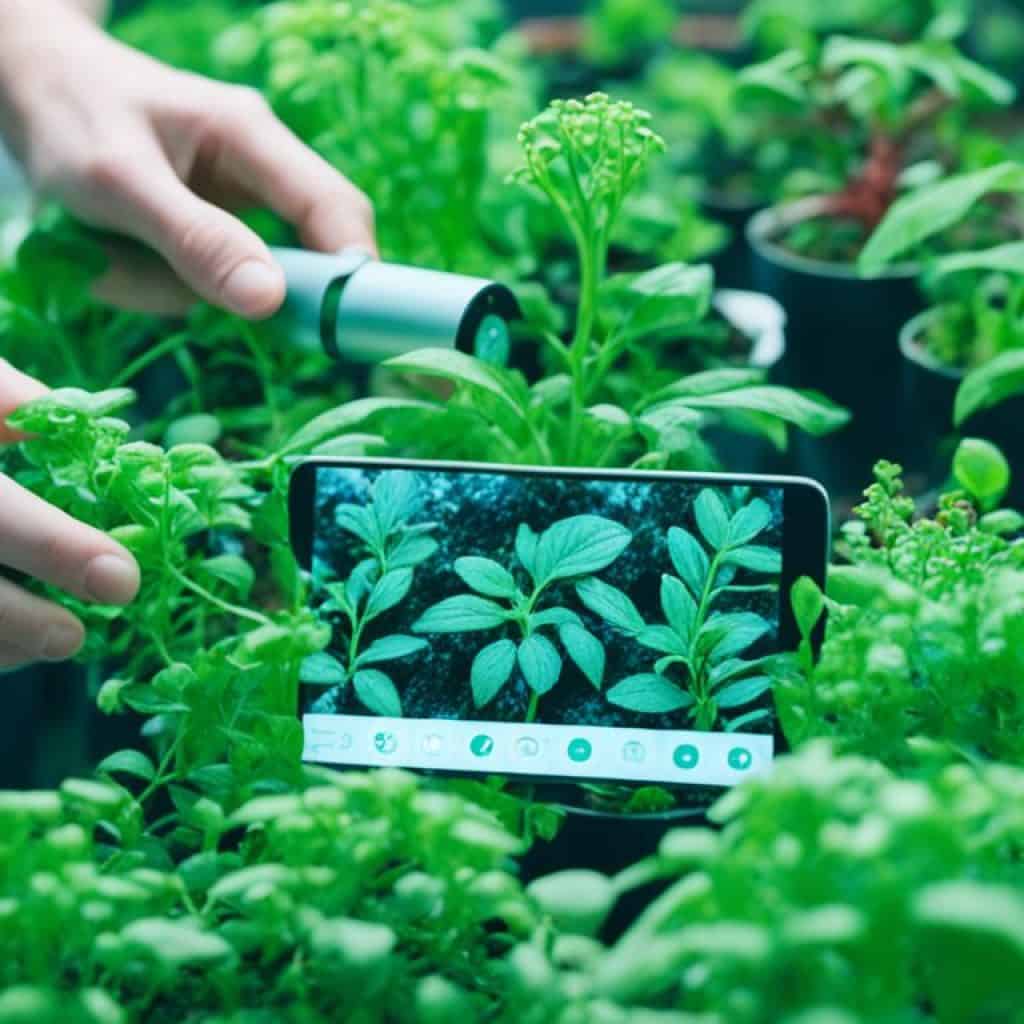
Watermarking AI Content: An Emerging Industry Standard
In today’s digital landscape, protecting intellectual property and ensuring content integrity are paramount concerns. This is especially true in the realm of AI-generated content, where the lines between authenticity and manipulation can blur. To address these challenges, watermarking AI content has emerged as an industry standard and a vital tool for content protection, digital rights management, and anti-piracy measures.
Watermarking involves embedding subtle but identifiable marks or logos into AI-generated videos and images. These watermarks act as digital fingerprints, indicating the ownership and authenticity of the content. By embedding unique identifiers such as logos, names, or timestamps, organizations and creators can assert their intellectual property rights and deter unauthorized use or distribution.
Implementing watermarking for AI content is a proactive measure that safeguards against copyright infringement and content theft. It acts as a deterrent, discouraging potential infringers from misappropriating or pirating valuable AI-generated assets. By visibly marking the content with ownership attribution, watermarking fosters accountability and promotes ethical content consumption.
Beyond content protection, watermarking also has significant implications for digital rights management. With AI algorithms becoming increasingly advanced, there is a need to establish clear guidelines and mechanisms to manage the distribution and usage of AI-generated content. Watermarking can play a crucial role in ensuring that content is properly identified, licensed, and distributed in accordance with intellectual property rights and licensing agreements.
Watermarking AI content is an integral part of the broader anti-piracy measures employed by content creators, networks, and platforms. By adding an identifiable mark, watermarking allows for quick identification and detection of unauthorized copies or redistributions. This helps in taking legal action against infringers and curbing the widespread distribution of illegally obtained content.
Furthermore, watermarking technology has evolved to be robust and resilient against tampering or removal attempts. Watermarks can be embedded at different levels of intricacy, making them difficult to alter or erase without compromising the quality of the underlying content. As AI algorithms continue to advance, watermarking techniques also adapt to counter emerging threats and ensure the integrity of AI-generated videos and images.
Watermarking AI content has become an emerging industry standard, reflecting the growing importance of protecting intellectual property and implementing effective digital rights management systems. As the ecosystem surrounding AI-generated content continues to evolve, watermarking offers a practical and reliable solution to safeguard content authenticity, combat piracy, and preserve the rights of content creators.
Dall-E and Sora: A Synergy of Visual AI Technologies
In this section, we explore the powerful synergy between Dall-E and Sora, two cutting-edge visual AI technologies developed by OpenAI. These groundbreaking advancements in AI integration have revolutionized the field of content creation and unleashed new artistic potential for vloggers and creators alike.
The Practicalities of Integrating Dall-E with Sora
Integrating Dall-E with Sora offers content creators a seamless and efficient workflow in generating visually stunning videos. Dall-E, known for its capability to generate images from textual descriptions, can be integrated with Sora’s text-to-video model, resulting in an enhanced creative process. By providing Dall-E’s high-quality visuals as input to Sora, content creators can harness the power of both technologies to produce captivating and engaging videos.
The Artistic Potential Unleashed by Visual AI
Combining Dall-E and Sora unlocks boundless artistic potential for content creators. With Dall-E’s ability to generate highly detailed and realistic images, and Sora’s text-to-video generation capabilities, creators can bring their visions to life with unparalleled creativity and realism. From visually stunning landscapes to imaginative characters, the synergistic power of these visual AI technologies opens up a world of artistic possibilities for vloggers, enabling them to produce captivating and immersive videos that engage and resonate with their audiences.
Next, we will explore the challenges and advancements in the realm of photorealism in AI-generated videos, and the implications for ensuring authenticity and credibility in this rapidly evolving landscape.
Navigating the Challenges of AI-Generated Deepfakes
In this section, we address the challenges associated with AI-generated deepfakes. The rise of AI technology has led to the creation of increasingly convincing and sophisticated deepfake videos. These AI-generated deepfakes pose significant risks, including the potential for digital deception and the spread of misinformation.
Combatting deception in digital content is crucial to maintaining trust and authenticity in the digital age. To effectively combat misinformation, various strategies and measures are being implemented.
Combatting Deception in Digital Content
One approach to combatting deception in digital content is through advancements in authenticity verification. The emergence of AI-powered tools and techniques enables accurate detection and identification of deepfake videos. Through the use of machine learning algorithms and computer vision technologies, researchers and tech companies are developing innovative solutions to detect and flag AI-generated deepfakes.
“The battle against AI-generated deepfakes requires a multi-faceted approach. By combining technological advancements with user education and media literacy programs, we can empower individuals to critically evaluate the authenticity of digital content.”
Additionally, increasing awareness among users about the existence and potential impact of deepfakes is essential in combatting deception. Education initiatives and media literacy programs play a key role in equipping individuals with the knowledge and skills to discern between genuine and manipulated content, thereby reducing the potential for misinformation to spread.
Regulatory Responses to AI Misinformation
Recognizing the profound impact of AI-generated deepfakes on society, governments and regulatory bodies worldwide are taking action to address this growing issue. Regulatory measures are being proposed and implemented to ensure authenticity verification and mitigate the harm caused by digital deception.
These regulatory responses focus on enhancing transparency and accountability in the creation and dissemination of AI-generated content. They aim to establish standards and guidelines for the responsible use of AI technology, particularly in the context of content creation and information sharing.
Furthermore, collaborations between tech companies, researchers, and policymakers are vital in formulating effective regulatory frameworks. By leveraging collective expertise and resources, these collaborations can drive the development of comprehensive strategies to combat the spread of AI-generated misinformation.
Together, technological advancements, user education, and regulatory measures can help navigate the challenges posed by AI-generated deepfakes. By ensuring authenticity verification and promoting responsible content creation, we can foster a more trustworthy and reliable digital ecosystem.
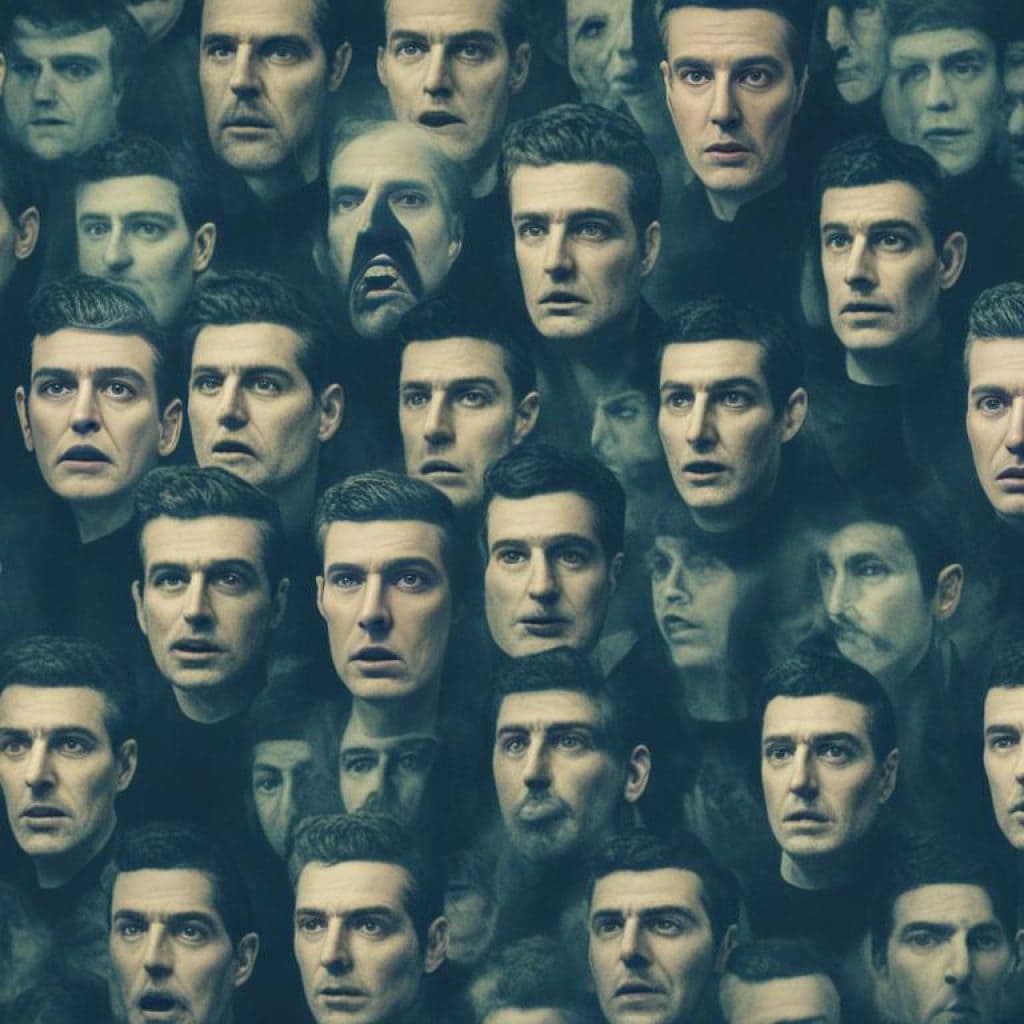
Collaborative Efforts to Secure AI’s Role in Elections
In the increasingly digital landscape of elections, ensuring the integrity and accuracy of the voting process is of paramount importance. Artificial Intelligence (AI) has the potential to play a significant role in elections, but it also brings challenges in terms of misinformation and security threats. To address these issues, collaborative initiatives involving tech companies and other stakeholders have emerged to safeguard the democratic process.
“We have a collective responsibility to protect the sanctity of elections and prevent the spread of AI-generated misinformation,” says Sarah Davis, CEO of Tech Solutions Inc. “By joining hands with industry leaders and government agencies, we can harness the power of AI to enhance electoral integrity and uphold the principles of democracy.”
Collaborative efforts focus on leveraging AI technology to identify and prevent the dissemination of false information during elections. By utilizing machine learning algorithms, AI can analyze vast amounts of data to detect and flag misleading content. These initiatives involve close partnerships between tech companies, research institutions, and government bodies, pooling resources and expertise to develop robust systems for identifying and countering misinformation.
Furthermore, collaborative initiatives aim to enhance the transparency and accountability of election systems. By implementing AI-powered auditing tools, electoral authorities can monitor and verify the accuracy of the voting process. This ensures that every vote is counted and strengthens public trust in the election results.
One notable collaborative initiative is the AI in Elections Forum, a platform where tech companies, policy experts, and electoral commissions collaborate to address the challenges posed by AI in elections. The forum serves as a knowledge-sharing hub, fostering dialogue and cooperation to develop best practices and guidelines for AI implementation in electoral processes.
Another key aspect of collaborative efforts is the development of robust AI algorithms for misinformation detection. Leading tech companies are investing in research and development to create advanced AI models capable of accurately identifying and flagging AI-generated misinformation in real-time. Through these collaborative ventures, tech companies are pooling their resources and expertise to create comprehensive solutions for protecting the integrity of elections.
With AI continuing to advance at a rapid pace, collaborative initiatives play a crucial role in securing the future of elections. By combining the efforts of tech companies, government bodies, and independent institutions, these initiatives ensure that the possibilities and power of AI are harnessed responsibly, protecting the fundamental principles of democracy.
Pioneering AI Education: University of Pennsylvania’s Undergraduate Major
In today’s rapidly evolving technological landscape, AI education has become essential for preparing the future workforce. The University of Pennsylvania is at the forefront of this movement, offering an innovative undergraduate major in AI that equips students with the skills and knowledge needed to excel in this dynamic field.
By introducing an AI major, the University of Pennsylvania recognizes the growing importance of artificial intelligence in various industries. This program goes beyond traditional computer science education, providing students with a comprehensive curriculum specifically tailored to AI.
The AI curriculum at the University of Pennsylvania covers a wide range of topics, including machine learning, natural language processing, computer vision, and robotics. Students have the opportunity to delve deep into these areas, gaining hands-on experience through projects and internships.
One of the unique features of the AI major at the University of Pennsylvania is its emphasis on practical applications. Students not only learn the theoretical concepts but also have the chance to apply their knowledge in real-world scenarios. This practical approach ensures that graduates are well-prepared to tackle the challenges of the future workforce.
“The AI major at the University of Pennsylvania has been a transformative experience for me. The curriculum is rigorous, and the faculty are experts in the field. I feel confident that I am well-prepared to contribute to the future of AI.” – Sarah Davis, AI major student
The University of Pennsylvania’s AI major not only focuses on technical skills but also fosters critical thinking, problem-solving, and ethical considerations. Students are encouraged to explore the societal implications of AI, addressing issues such as bias, fairness, and privacy.
By pioneering AI education, the University of Pennsylvania is shaping the future of the workforce. Graduates of the AI major are well-positioned to become leaders in various industries, driving innovation and pushing the boundaries of artificial intelligence.
The University of Pennsylvania’s commitment to AI education not only benefits its students but also contributes to the development of the AI ecosystem as a whole. By producing highly skilled AI professionals, the university plays a crucial role in addressing the demand for AI talent in academia, research, and industry.
AI Major Curriculum at the University of Pennsylvania
| Course | Description |
|---|---|
| Introduction to AI | An overview of AI concepts, techniques, and applications |
| Machine Learning | Exploration of algorithms and models used in machine learning |
| Natural Language Processing | Study of techniques for processing and understanding human language |
| Computer Vision | Examination of methods for interpreting and analyzing visual data |
| Robotics | Introduction to the principles and applications of robotics |
| Ethics in AI | Investigation of ethical considerations in AI development and deployment |
The AI major at the University of Pennsylvania is an exciting opportunity for students to learn and contribute to the field of artificial intelligence. By combining a comprehensive curriculum, practical applications, and a focus on ethical considerations, this program prepares students for a future workforce driven by AI innovation.
OpenAI’s Role in the Evolution of AI Tools for Vlogging
In the rapidly evolving landscape of content creation, OpenAI has emerged as a driving force in the development of AI tools for vlogging. Leveraging their expertise in machine learning algorithms, OpenAI has been at the forefront of innovative solutions that are transforming the way videos are created and edited.
By harnessing the power of AI, OpenAI has made significant advancements in automating various aspects of the content creation process. Their tools enable vloggers to efficiently generate high-quality videos, saving time and effort while ensuring an engaging viewer experience.
OpenAI’s machine learning algorithms have revolutionized video editing, allowing creators to enhance and refine their content with remarkable precision. With AI-powered tools, vloggers can now seamlessly remove blemishes, enhance audio quality, and add special effects, enhancing the overall production value of their videos.
One notable tool developed by OpenAI is the text-to-video model, which allows vloggers to turn written scripts into visually captivating videos. By leveraging machine learning algorithms, OpenAI’s text-to-video models enable vloggers to unleash their creativity and bring their ideas to life in a more efficient and streamlined manner.

“OpenAI’s innovative machine learning algorithms are transforming content creation and video editing processes.”
OpenAI’s commitment to pushing the boundaries of AI technology is paving the way for exciting possibilities in the world of vlogging. As their tools continue to evolve and improve, vloggers can expect a more seamless and intuitive content creation experience.
The integration of AI in vlogging has not only empowered creators but also enhanced the viewer experience. With AI-powered tools, vloggers can deliver more immersive and engaging content, captivating their audience and fostering greater connection and interaction.
In conclusion, OpenAI’s role in the evolution of AI tools for vlogging has been instrumental in shaping the future of content creation. Through their groundbreaking machine learning algorithms and innovative solutions, OpenAI is empowering vloggers to unleash their creativity and revolutionize the way videos are produced and shared.
Conclusion
In conclusion, OpenAI’s groundbreaking advancements in AI vlogging have revolutionized the field of content creation. Through its innovative technologies and commitment to driving technology innovation, OpenAI has paved the way for a future where AI plays a central role in content creation.
By leveraging machine learning and neural networks, OpenAI’s text-to-video model, Sora, has set a new standard for video generation. Its remarkable capabilities and features have transformed the content creation landscape, enabling creators to bring their visions to life with unprecedented ease and realism.
Looking ahead, the future of content creation holds immense potential. OpenAI’s contributions have not only opened doors to new creative possibilities but have also sparked a wider conversation about the integration of AI technologies in storytelling. As AI continues to evolve, we can expect even more exciting and immersive experiences for audiences around the world.
As we embrace this future, it is crucial to ensure responsible and ethical AI development. OpenAI’s commitment to AI safety and its implementation of President Biden’s AI executive order highlight the importance of ethical approaches in technology innovation. By working together, we can create a future where AI vlogging enhances our lives while respecting the values and principles that underpin our society.


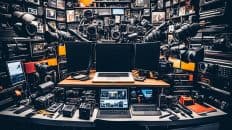























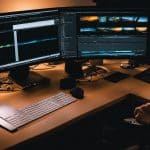






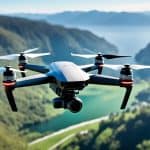






















Add comment